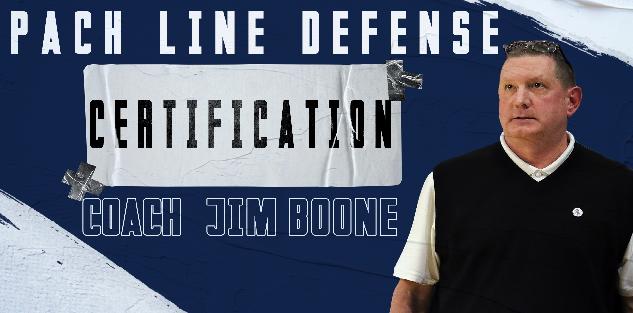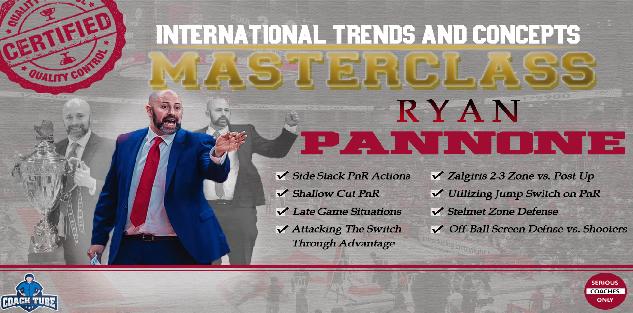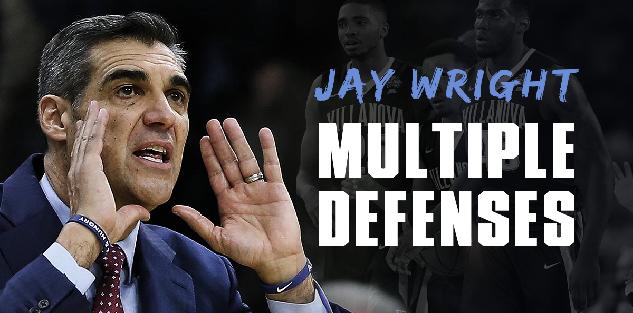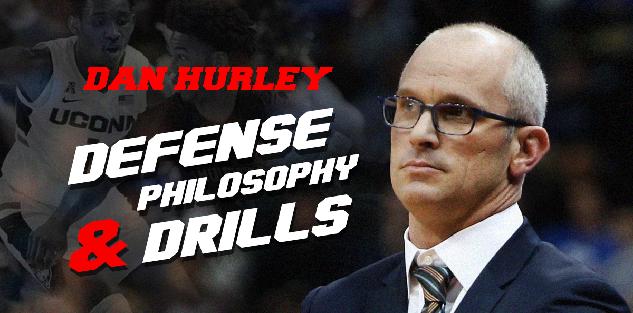Featured courses
- Two Great Game Situational Workouts For the Basketball Offseason by Grant Young
- Two Reads Basketball Players Must Understand Before Executing the Ball-Screen by Grant Young
- Two of LSU Coach Kim Mulkey’s Game-Winning Inbounds Plays by Grant Young
- Three Effective Early-Season Defensive Basketball Drills by Grant Young
- Four Essential Tips For Basketball’s 1-3-1 Zone Defense by Grant Young
- Four Zone Defense Drills to Strengthen Your Team by Grant Young
- How to Beat the Three Most Common Pick and Roll Coverages by Grant Young
- Two Drills to Improve Shooting at the Start of the Basketball Season by Grant Young
- Core Basketball Principles That Dallas Mavericks Coach Sean Sweeney Teaches by Grant Young
- Three Competitive Shooting Drills For Your Basketball Team by Grant Young
- How To Teach The ‘I’ Generation of Basketball Players by Grant Young
- Three Elite Drills to Begin a Basketball Practice With by Grant Young
- How to Build a Championship-Winning Basketball Team Culture by Grant Young
- Two of Texas Women’s Basketball Coach Vic Schaefer’s Tips For Team Culture by Grant Young
- Atlanta Dream WNBA Coach Brandi Poole’s Four Sets for Secondary Offense by Grant Young
- NC State Basketball Coach Brett Nelson’s 4 Crucial Point Guard Qualities by Grant Young
- Kentucky Coach Mark Pope’s Five Guard Rules For Offense by Grant Young
- McNeese State Basketball Coach Will Wade’s 4 Core Pillars by Grant Young
- 4 Tips To Instantly Improve Your Free Throw Shooting by Tyler Linderman
- Assemble a Championship-Caliber Basketball Rotation by Brandon Ogle
- Two of UConn Coach Dan Hurley’s Key Defensive Drills by Grant Young
- Four Post Moves All Basketball Forwards Should Have In Their Bag by Grant Young
- Four of Baylor Coach Nicki Collen’s Midseason Pick and Roll Adjustments by Grant Young
- WNBA Legend Sue Bird’s Two Tips For Attacking on Offense by Grant Young
- Houston Coach Kelvin Sampson’s Three Keys for Building a Basketball Program by Grant Young
- Two of Tom Izzo’s Top Michigan State Defensive Drills by Grant Young
- Four of Olympic Gold Medalist Coach Mechelle Freeman’s Relay Race Strategies by Grant Young
- Three Key Strategies Will Wade Uses to Build a Dominant Team by William Markey
- Five UConn Huskies Men’s Basketball Plays That You Can Use by Grant Young
- Three Tips for Maintaining Team Culture at the End of a Basketball Season by Grant Young
- Three Dribble Drive Motion Drills to Teach Your Basketball Team by Grant Young
- Three Dribbling Drills For Non-Primary Ball Handlers by Grant Young
- Four Advanced Ball Handling Drills For Basketball Guards by Grant Young
- Three Tips to Sharpen Your Post Player’s Footwork in Basketball by Grant Young
- These Three Pick and Roll Drills Are Crucial For Any Ball Screen Offense by Grant Young
- Three Closeout Drills to Improve Basketball Shooting Defense by Grant Young
- Three Tips to Perfect the Packline Defense in Basketball by Grant Young
- Four Keys to Executing the Read and React Offense in Basketball by Grant Young
- Three Tips to Develop Elite Basketball Shooters by Grant Young
- Three Crucial Keys to Executing the 5 Out Offense in Basketball by Grant Young
- These Three Offensive Sets Will Help You Beat Any Zone Defense by Grant Young
- Three Transition Basketball Drills To Play With More Pace by Grant Young
- Three 5 Out Offense Drills Any Basketball Coach Can Use by Grant Young
- Four Vital Techniques for a Motion Offense in Basketball by Grant Young
- Three Baseline Inbounds Plays To Win Your Basketball Team Games by Grant Young
- Four Drills For Sharpening the European Ball Screen Offense by Grant Young
- Three Positioning Tricks For a Basketball Zone Offense by Grant Young
- Three Rules to Perfecting Basketball's Lock Left Defensive System by Grant Young
- UCLA WBB Coach Cori Close’s Two Keys to Winning the Mental Game by Grant Young
- Four of Alabama Coach Nate Oats’ Favorite Basketball Drills by Grant Young
- Three Ways To Turn Transition Offense in Basketball Into Points by Grant Young
- Three Drills to Master Basketball's Pack Line Defense by Grant Young
- Three Transition Defense Drills to Halt Fast Breaks by Grant Young
- Four Offensive Rebounding Drills to Win Second Possessions by Grant Young
- 4 Defensive Technique Drills from Boston Celtics Assistant Coach Brandon Bailey by Marek Hulva
- 5 Drills to Improve Ball Handling by Tyler Linderman
- 13 FUNNY BASKETBALL GIFS by Alex
- BASKETBALL SPEED AND AGILITY: 8 QUESTIONS FOR COACHTUBE EXPERT RICH STONER by Jaycob Ammerman
- Defensive Strategies for Basketball by Ryan Brennan
- 4 Keys To Turning Your Program Into Championship Contender By Dallas Mavericks Coach Sean Sweeney by Marek Hulva
- 5 Components to Creating a Winning Basketball Program by Justin Tran
- Guide to Becoming a Lethal Scorer in Basketball by Justin Tran
- Zone Defense In the NBA Eastern Conference Finals by James Locke
- Mastering Court Mobility: Tips for Effective Movement in Basketball by Justin Tran
- 5 Basketball Shooting Drills: How to Develop a Sharpshooter by James Locke
- 6 Points of Emphasis for a Successful 5 Out Offense by Jaycob Ammerman
- Effective and Efficient Methods to Practice During the Basketball Season by Justin Tran
- Three Great Passing Drills From a Basketball Coaching Legend by Grant Young
- 7 Principles For Perfecting the Princeton Offense in Basketball by Grant Young
- How to Replicate A Modern NBA Offense by Grant Young
- Three Great Two-Ball Dribbling Drills For Basketball Development by Grant Young
- Two Rebounding Drills to Win Your Basketball Team Championships by Grant Young
- How to Improve Your Basketball Team’s Defense With the Shell Drill by Grant Young
- How Baylor Basketball’s Scott Drew Develops Elite Guard Play by Grant Young
- Off-Ball Movement Tips and Strategies: Lessons From the NBA Finals by James Locke
- Player Development: Scott Drew’s Tips for Producing NBA Guards by James Locke
- How to Execute a Spread Offense in Basketball by Grant Young
- Four Quality Quotes From Four Final Four Coaches by Grant Young
- A Guide to the Pack Line Defense by Alex Martinez
- 3 Defensive Build Up Drills to Improve Team Basketball Defense by Grant Young
- Battle of Two Great Coaches: Best Plays from the NBA Finals Contenders by Justin Tran
- 10 Creative Ways Athletic Programs Can Use a Video Board to Raise Money by Coach Williams
- How to Use 3 on 3 to Improve Your Basketball Team by Grant Young
- How to Defend the Pick and Roll by Grant Young
- Mastering Basketball Defense: Techniques, Drills, and Strategies for Success by Justin Tran
- Three Tips From The Coach Who Developed Giannis Antetokoumnpo by Grant Young
- 2023 NBA Draft: Skills and Technique from Top Prospects by Justin Tran
- From College to the Pros: Transitioning the Dribble Drive Offense by Justin Tran
- Positionless Basketball: Redefining Roles on the Court by Justin Tran
- Revolutionize Your Offense: Proven Concepts to Elevate Your Basketball Game by Justin Tran
- 5 Essential Fastbreak Drills Every Basketball Coach Should Know by James Locke
- How to Run a Circle Offense in Basketball by Grant Young
- Game-Changing Strategies: ATO Plays in the EuroLeague and Olympics by Justin Tran
- How to Stand Out at Basketball Tryouts by Grant Young
- How to Improve Your Basketball Team’s Transition Defense by Grant Young
- Indiana Fever GM Lin Dunn’s Two Keys For Women’s Basketball Coaches by Grant Young
- Strength Training Strategies Every Basketball Player Should Have by Grant Young
- A WNBA Basketball Coach’s Four Priorities In Transition Defense by Grant Young
- Three Adjustments to Make When Your Basketball Offense Isn’t Working by Grant Young
- Three Pillars to Applying Defensive Pressure on the Basketball Court by Grant Young

How to Improve Your Basketball Team’s Transition Defense
- By Grant Young
Transition is one of the hardest aspects of the game for a basketball team to train for because it's fast-paced and it's over in seconds.
For an offense, it's the easiest opportunity to score easy baskets, drive to the lane, and rack up points in bunches before their opponent has time to adjust. Especially now with so many teams focusing their effort on playing fast and pushing the pace, It's important to set up a good transition defense game plan.
Opposing teams will often try to take advantage of the transition because players are typically scattered on the floor and it's hard for a team to get back into their defensive set amidst this chaos. As part of transition defense, it is crucial not to allow the opponent any easy points. The best way to achieve this goal is to always make sure one player is focused on getting back on defense so that there’s at least one person available to stop a transition attack.
A few common tips for a player on transition defense is to sprint back and try to force at least three passes, which will ideally give their teammates time to get back. Players should also not backpedal, as this might throw them off balance. Players should also aim to protect the basket and shrink the floor. But possibly the most important point is communication via talking and pointing while running back, which can make the job easier.
While all players and coaches know these basic transition tips, Chris Kreider can take your transition defense knowledge to a whole new level.
Coach Kreider is in his second season as an assistant coach at SMU. Prior to that, Coach Kreider served as an assistant coach at Georgia State. He was previously at Rice University, where he guided the Panthers to a 16-6 record and a third-straight appearance in the Sun Belt Conference Tournament Championship Game. Along the way, he led the Panthers to an opening night, quadruple overtime victory over Georgia Tech, marking the program’s first win over an ACC opponent in school history.
Coach Krieder’s ‘Transition Defense’ course is an excellent resource for any basketball coach who is looking to turn their transition defense into a stalwart force that any opposing team will struggle to score against.
Things to Consider

Coach Krieder has five questions that pertain to transition defense that he believes are crucial to succeeding in that facet of the game.
The first one is: Have we identified and taught our defense assignments in transition (1-5)?
For this one, a coach must make sure that every defensive player knows exactly what their defensive assignment is every second they’re on the court. As soon as the opposing team gets their shot up, every player must be clear on what their assignment is, both of the shot is made, and if it’s missed.
The second question is: How many players do we send to the glass to rebound vs. how many do we send back on transition defense?
While this question is simple enough, it’s also important for coaches to understand why they’re making this specific personnel decision. Is it because it’s what other teams do? Because the coach has had success with it in the past? Or is it a matter of roster construction? Knowing the why behind this decision will help any coach decide on the correct numbers to allocate to each scenario.
Transition defense question No. 3 is: How much attention do we give our transition defense on a daily basis?
The amount of practice time a coach allocates to transition defense directly correlates to the amount of success they can expect their team to have in transition. While this doesn’t mean that tons of practice time is dedicated to this facet of the game, coaches ensuring that many of the habits that make for good transition defense (communication, conditioning, and rim protection) are getting practiced will be a major asset when transition defense is needed during the game.
Coach Kreider’s fourth question is: How do we hold ourselves accountable in this area (practice and games)?
Whenever a team designates that practice time and those responsibilities on the transition, coaches need to find a means to hold their players accountable for executing them. This could be done by charting every transition scenario, assigning a percentage to each player, or any other way that a coach wants to utilize.
The fifth and final essential transition defense question is: What is our plan when we run into “that team” that challenges our system?
There will always be a team that prides itself on transition offense that will present a true challenge to your team. When that happens, a coach must have a “Plan B” ready for their team to turn to.
Communication - Talk & Point
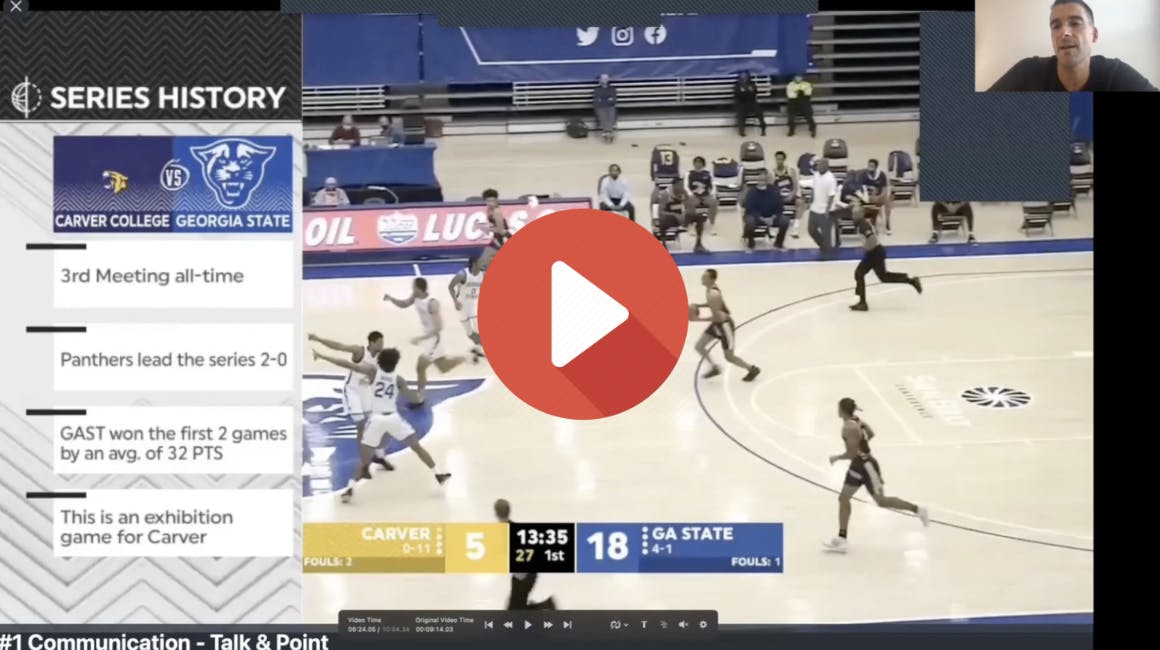
Coach Kreider emphasizes that a little bit goes a long way when it comes to communicating during transition defense.
In the screenshot above, three Georgia State players can be seen pointing back on defense. This is a great example of players knowing where they’re supposed to be, holding each other accountable to their specific positions, and using hand gestures to communicate. The players were also surely speaking with one another in this instance.
Of course, these great habits don’t come around by coincidence. It took time for Coach Kreider’s players to understand how important communication is during transition defense, and for them to then instill these changes when they’re in the court.
But as long as players are seeing a commitment from their coach about making transition defense a priority, they will surely begin to do the same.

